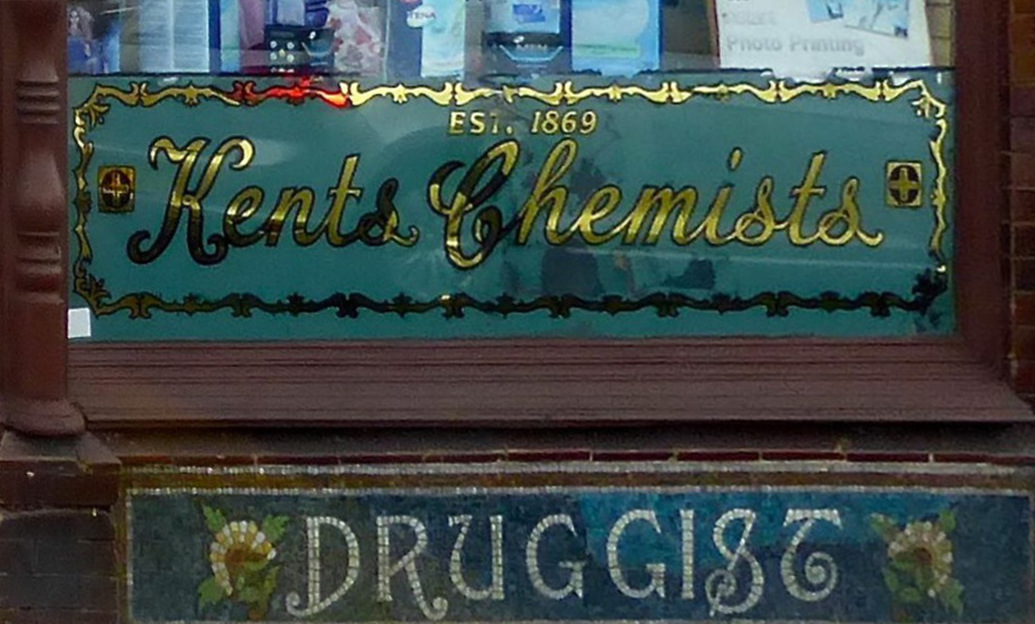
Kent's Chemist, now East Molesey Pharmacy, 104, Walton Road, East Molesey, Surrey. This Grade II listed building was built by Joseph Dorking in 1894 to the designs of the London architectural firm of Tinker and Morewood, located in Southampton Row. Materials: red brick, with yellow brick banding (listing text). It was built for the Kent family and remained in that family until the early 1960s; it still provides the same service to the community. The main reason for its listing is "its strong decorative treatment, particularly the shopfront with distinctive mosaic signage," which shows the "imaginative approach to commercial architecture of the period, as well as clearly expressing its history and function in its design and detail." The listing text also tells us that there are historical reasons for listing it, since it is "a purpose-built manifestation of a longstanding local family business," and is an "unusually complete exterior survival."

Of further interest is the fact that the original building contract dated 1894 "identifies the owner of the plot ... as being a Beatrice Mary Kent of Walton Place, East Molesey." Is it fanciful to see Beatrice's hand in the decorative elements here? She would have been the widow of F. W. Kent, whose chemist's shop on the same road had originally been established in 1869 (as seen, "estab. 1869" is written above the chemist's name on the frontage). He had died in 1890, and their son William, previously his assistant, would take over the present premises once they were completed (see the Village Matters piece). The family probably lived in the residential part of the building.
There are many more details in the listing text, which describes the building generally as being in the "Domestic Revival idiom." Special mention is made of the little square bull's-eye lights at the top of the window, which are also found in the curved corner door (partly visible on the right in the main photograph), and the transom across the middle of the shop-front window, which is thought to mark the place where an inner shelf would once have been located, for the display of coloured liquids in large glass bottles (or "carboys"), the traditional sign of a chemist's. This quaint shop is part of the local conservation area.
Photographs, text and formatting by Jacqueline Banerjee You may use these images without prior permission for any scholarly or educational purpose as long as you (1) credit the photographer and (2) link your document to this URL in a web document or cite the Victorian Web in a print one. [Click on the images to enlarge them.]
Bibliography
"Kant's [sic] Chemist." Village Matters. Web. 8 February 2017.
Kent's Chemist. Historic England. Web. 8 February 2017.
Created 8 February 2017